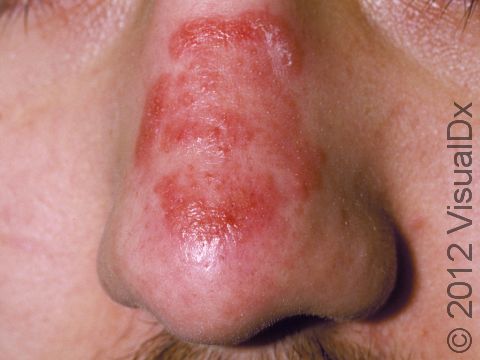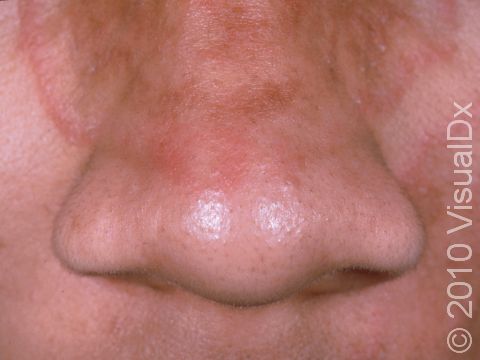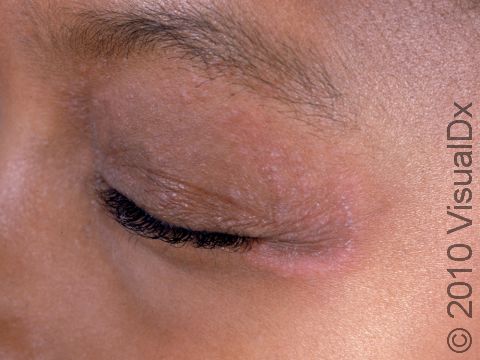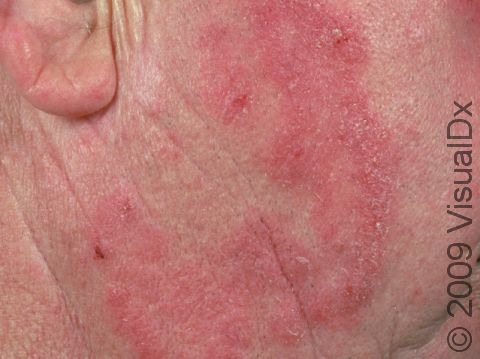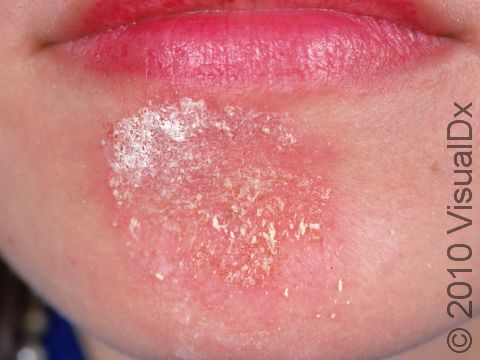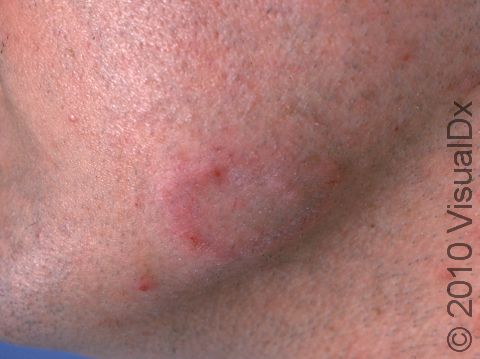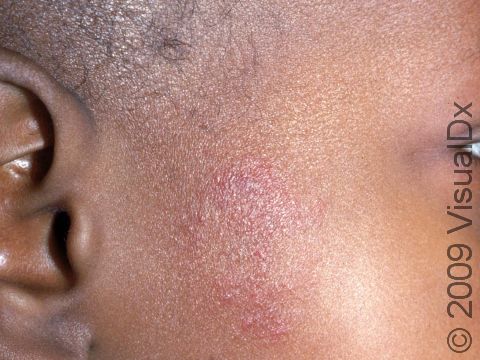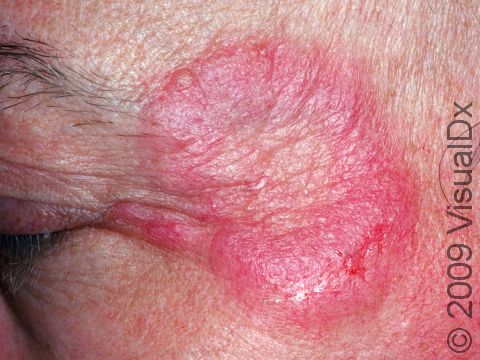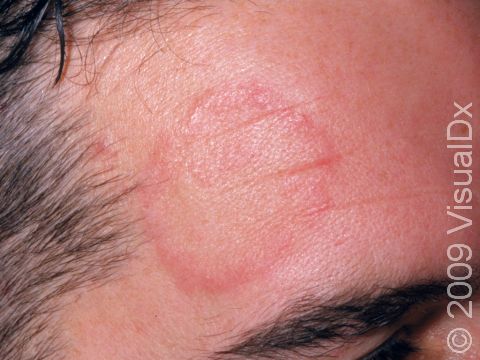Ringworm, Facial (Tinea Faciei)
Tinea infections are commonly called ringworm because some infections form a ring-like pattern on affected areas of the body. Facial ringworm (tinea faciei), also known as tinea faciale or ringworm of the face, is a common, non-cancerous (benign) fungal infection of the surface (superficial) skin of the face. Facial ringworm may be passed to humans by direct contact with infected people, infected animals, contaminated objects (such as towels) or the soil.
In children and most women, facial ringworm can appear on any part of the face. In all men and in women who have dark, course hair on their face, it is known as beard ringworm (tinea barbae) when the infection occurs on the bearded part of the face.
Who's At Risk?
Facial ringworm may occur in people of all ages, of all races, and of both sexes. However, it is more common in warmer, more humid climates. In addition, it is most frequently seen in adults aged 20–40.
People with suppressed immune systems (eg, with diabetes, leukemia, or HIV/AIDS) are more likely to develop facial ringworm or to have more severe forms of the disease.
Signs & Symptoms
The most common locations for facial ringworm include the following:
- Cheeks
- Nose
- Around the eye
- Chin
- Forehead
Facial ringworm appears as one or more pink-to-red scaly patches ranging in size from 1 to 5 cm. The border of the affected skin may be raised and may contain bumps, blisters, or scabs. Often, the center of the lesion has normal-appearing skin with a ring-shaped edge, leading to the nickname “ringworm,” even though it is not caused by a worm.
Facial ringworm can be itchy, and it may get worse or feel sunburned after exposure to the sun.
Self-Care Guidelines
If you suspect that you have facial ringworm, you can try one of the following over-the-counter antifungal creams or lotions:
- Terbinafine
- Clotrimazole
- Miconazole
Apply the cream to each lesion and to the normal-appearing skin 2 cm beyond the border of the affected skin for at least 2 weeks until the lesions are completely gone. Because ringworm is very contagious, avoid contact sports until lesions have been treated for at least 48 hours.
Since people often have tinea infections on more than one body part, examine yourself for other ringworm infections, such as in the groin (tinea cruris), on the feet (tinea pedis, athlete’s foot), and anywhere else on the body (tinea corporis).
Have any household pets evaluated by a veterinarian to make sure that they do not have a fungal (ie, dermatophyte) infection. If the veterinarian discovers an infection, be sure to have the animal treated.
Treatments
To confirm the diagnosis of facial ringworm, your physician might scrape some surface skin materials (scales) onto a glass slide and examine them under a microscope. This procedure, called a KOH (potassium hydroxide) preparation, allows the doctor to look for tell-tale signs of fungal infection.
Once the diagnosis of facial ringworm is confirmed, your physician will probably start treatment with an antifungal medication. Most infections can be treated with prescription-strength topical creams and lotions, including:
- Terbinafine
- Clotrimazole
- Miconazole
- Econazole
- Oxiconazole
- Ciclopirox
- Ketoconazole
- Sulconazole
- Naftifine
Rarely, more extensive or long-standing infections may require treatment with oral antifungal pills, including:
- Terbinafine
- Itraconazole
- Griseofulvin
- Fluconazole
The ringworm should go away within 4–6 weeks after using effective treatment.
Visit Urgency
If the lesions do not improve after 1–2 weeks of applying an over-the-counter antifungal cream, see your doctor for an evaluation.
Trusted Links
References
Bolognia, Jean L., ed. Dermatology, pp.1179. New York: Mosby, 2003.
Freedberg, Irwin M., ed. Fitzpatrick’s Dermatology in General Medicine. 6th ed. pp.1998. New York: McGraw-Hill, 2003.
Last modified on October 5th, 2022 at 8:06 pm

Not sure what to look for?
Try our new Rash and Skin Condition Finder
